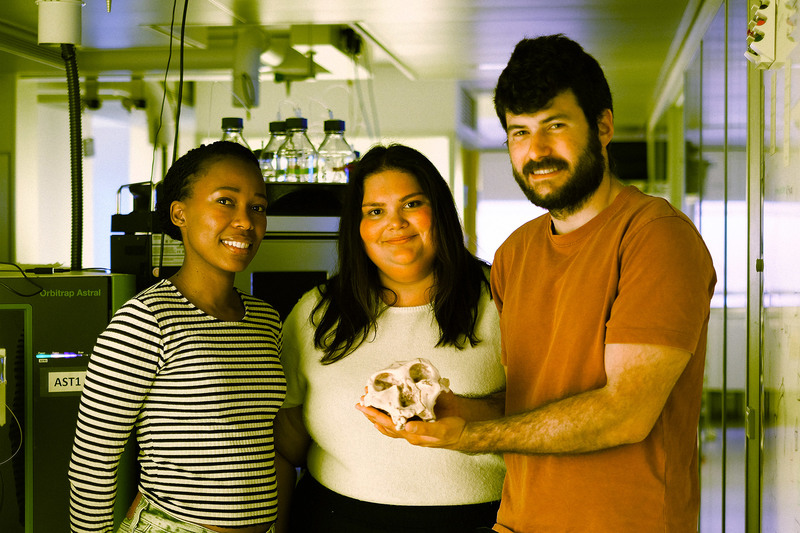Researchers from the University of Cape Town (UCT) and the University of Copenhagen have made history by utilising ancient proteins to unravel biological sex and genetic variation in Paranthropus robustus, a key extinct relative of modern humans.
The findings present humanity with some of the oldest genetic data recovered from Africa, challenging previously held assumptions about Paranthropus robustus and how our early hominin ancestors lived.
“Because we can sample multiple African Pleistocene hominin individuals classified within the same group, we’re now able to observe not just biological sex, but for the first time, genetic differences that might have existed among them,” stated Dr Palesa Madupe, the study’s co-lead and a research associate at UCT’s Human Evolution Research Institute (HERI).
Dr Madupe, alongside a formidable team—from co-director Professor Rebecca Ackermann to various research associates at HERI—utilised cutting-edge palaeoproteomic techniques and mass spectrometry in this groundbreaking study. They successfully identified sex-specific variants of amelogenin, a protein integral to tooth enamel. Of the four ancient individuals analysed, two were identified as male, while the biological sex of the others was inferred as female through innovative quantitative methods.
“Enamel is extremely valuable because it provides information about both biological sex and evolutionary relationships. However, since identifying females relies on the absence of specific protein variants, it is crucial to rigorously control our methods to ensure confident results,” explained paper co-lead Claire Koenig, a postdoctoral researcher at the University of Copenhagen’s Center for Protein Research.
In a surprising twist, analysis of another enamel protein—enamelin—uncovered unexpected genetic diversity among the four individuals. Two exhibited a shared variant, while a third presented a distinct variant, with the fourth displaying both, suggesting complexities previously overlooked in our understanding of these ancient beings.
Co-lead Ioannis Patramanis commented on this shift in perspective, saying, “When studying proteins, specific mutations are thought to be characteristic of a species. We were thus quite surprised to discover that what we initially thought was a mutation uniquely describing Paranthropus robustus was actually a variable within that group.”
This revelation invites a reconsideration of how ancient hominin species are categorised, indicating that genetic variation is as pivotal as skeletal features in piecing together our evolutionary history. “With this data, we shed light on how evolution worked in the deep past and how recovering these mutations might help us understand genetic differences we see today,” added Madupe.
The Paranthropus species flourished in Africa between 2.8 and 1.2 million years ago, standing upright and likely cohabiting with early members of the genus Homo. Although their evolutionary trajectories diverged, their story remains crucial to unearthing the roots of human existence.
This significant advancement in palaeoproteomics not only underscores the potential of African research institutes but also highlights the important role of African scholars in redefining human history. “As a young African researcher, I’m honoured to contribute significantly to such a high-impact publication as its co-lead. It’s important to acknowledge that the journey for people of colour in this field is ongoing, and more of us must take the lead in research like this,” Madupe concluded.

